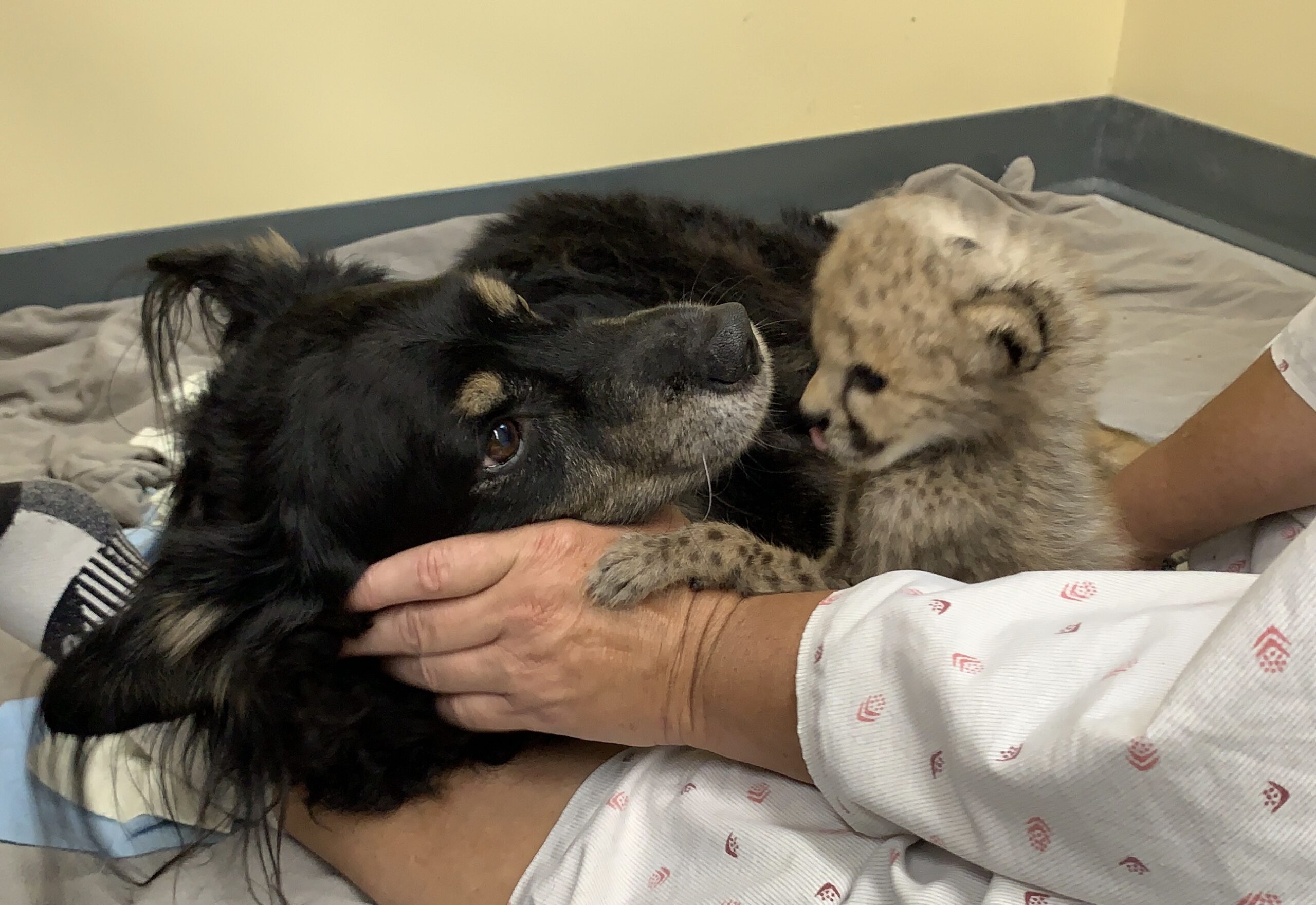Veteran Nanny “Blakely” Comes out of Retirement to Help with Baby Cheetah
 Cub being cared for by neonate staff and canine companion
Cub being cared for by neonate staff and canine companion
CINCINNATI (August 2, 2019) – Cincinnati Zoo & Botanical Garden has enlisted the services of retired Australian Shepherd “Blakely” to help its neonate staff care for a baby cheetah that was the lone survivor of a litter of three born on July 7, 2019, at the Zoo’s cheetah breeding facility in Clermont County to first-time-mom Neena. Cheetah moms do not receive enough stimulation from a single cub to produce an adequate milk supply, so the Zoo’s expert neonate team stepped in.
“We can provide nutrition, medical care and some of the TLC that baby animals need, but Blakely can serve as a role model, companion and surrogate parent for them,” said Cincinnati Zoo’s Head of Neonate Care Dawn Strasser. “Blakely will teach the cub animal etiquette and handle some of the social responsibilities, like snuggling, playing and disciplining, that would typically be performed by a mother.”
Before retiring in 2017, when he was six years old, Blakely cared for several cheetahs, an ocelot, a takin, bat-eared foxes, an aardvark, a warthog, sibling wallabies, and a litter of Malayan tiger cubs! The tigers were his last charges before he left to live with a former Nursery keeper, who left the door open for him to return if his services were needed.
“Introductions are going well,” said Strasser. “We put them together for the first time two days ago, and Blakely went into work mode! His nurturing and patience skills kicked in, and he sat still while the cub climbed on him and tried to figure out what to do with him.”
The cub, named “Kris” after longtime Cat Ambassador Program (CAP) supporter Kris Kalnow, is healthy, active, and alert according to CAP leader Linda Castaneda. She added that she is “somewhat sassy”, which is a great quality for a strong runner. “We’re hoping that she’ll follow in the footsteps of eight-year-old Savannah, one of the fastest runners in the Zoo’s Cheetah Encounter and the first baby that Blakely helped raise.”
Kris will move from the Animal Health Center, where she is currently receiving round-the-clock care from neonate staff, CAP trainers, and Blakely, to the CAP facility in a month or two. CAP staff is looking for a puppy that will become her new companion when she’s ready. Blakely will most likely return to his home away from home at that time, leaving the puppy to grow up with Kris and be her constant companion for a year or two.
The Cincinnati Zoo is one of nine institutions accredited by the Association of Zoos and Aquariums (AZA) that participate in a cheetah Breeding Center Coalition (BCC). Working closely with the AZA’s Cheetah Species Survival Plan (SSP), the BCC’s goal is to create a sustainable cheetah population that will prevent extinction of the world’s fastest land animal. Forty-four cubs born at the Cincinnati facility have become ambassadors and/or members of the AZA’s managed breeding population.
Cheetahs are endangered, and their population worldwide has shrunk from about 100,000 in 1900 to an estimated 9,000 to 12,000 cheetahs today.

